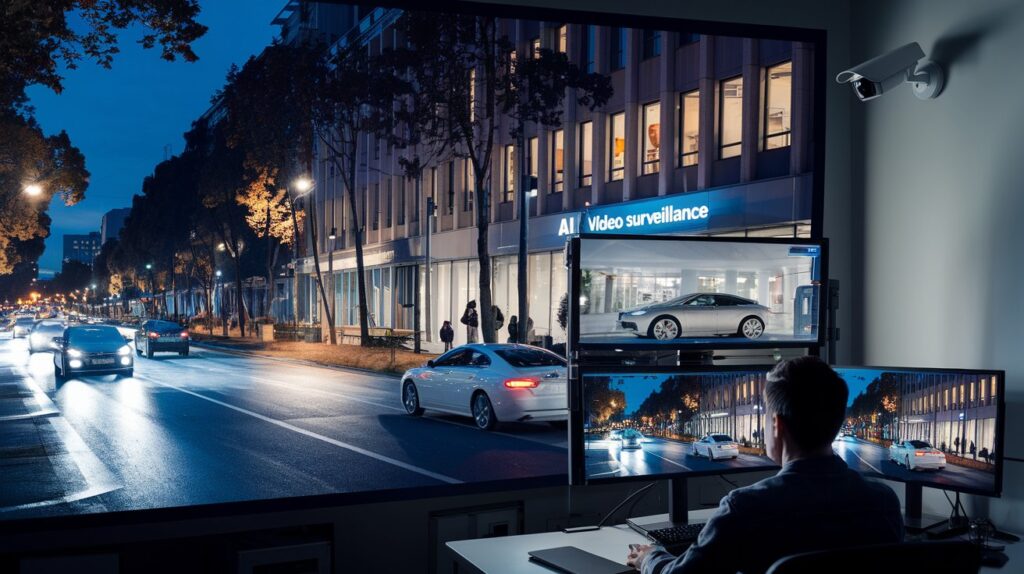Artificial Intelligence (AI) is revolutionizing video surveillance, enabling smarter, faster, and more proactive security solutions. With AI-powered analytics, modern surveillance systems can analyze footage in real-time, identify potential threats, and even predict security risks. This transformation is reshaping industries ranging from public safety to retail and manufacturing.

The video surveillance market involves using cameras and monitoring systems to enhance security across various sectors. Applications involve monitoring public places, transportation hubs, industrial facilities, and private properties. Key growing trends include the application of AI and cloud-based solutions boasting advanced analytics and remote access. The increasing number of smart city initiatives with growing security concerns act as a driver for the market. The integration of video surveillance into other technologies provides overall security solutions.
Key Features of AI Video Surveillance
- Real-Time Monitoring and Alerts
AI algorithms process video feeds in real-time, identifying unusual activities such as unauthorized access, loitering, or crowd formations. This enables security personnel to respond swiftly, preventing potential incidents. - Facial Recognition and Biometrics
AI enhances identification capabilities through facial recognition and biometric analysis, making it easier to identify individuals in crowded or high-risk areas. These systems are widely used in airports, banking, and critical infrastructure. - Behavioral Analysis
Advanced AI models can detect anomalies in behavior, such as suspicious movements or abandoned objects, improving situational awareness and preemptive action. - Data-Driven Insights
Beyond security, AI video surveillance provides valuable insights. For example, in retail, AI can analyze foot traffic and customer behavior, optimizing store layouts and marketing strategies.
Applications Across Industries
- Public Safety: AI surveillance systems help monitor urban environments, reduce crime, and enhance emergency responses.
- Retail: In addition to theft prevention, AI assists in understanding consumer patterns and enhancing customer experience.
- Manufacturing: AI ensures workplace safety by monitoring adherence to safety protocols and identifying hazards.
Challenges and Ethical Considerations
Despite its benefits, AI video surveillance faces challenges such as data privacy concerns and the risk of misuse. It is crucial to establish clear regulations and ethical frameworks to ensure responsible deployment.

The Future of AI in Surveillance
The integration of AI with technologies like IoT and 5G will further enhance the capabilities of video surveillance. From autonomous drones for monitoring large areas to predictive analytics for proactive security, the future of AI surveillance promises more robust and intelligent systems.
AI video surveillance is not just about enhancing security; it’s about creating smarter environments that are safer, more efficient, and better informed. As advancements continue, it will play a pivotal role in shaping the connected ecosystems of tomorrow.